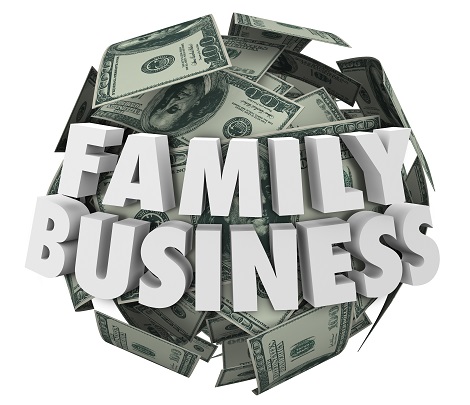Six Key Challenges Facing Family Businesses
Family businesses are the quiet success story of the American economy. According to a 2014 Forbes articles entitled, “The Biggest Myth About Family Businesses”, approximately 35 percent of Fortune 500 companies are family-controlled and represent the full spectrum of American companies from small business to major corporations. In addition, family businesses account for 50 percent of U.S. gross domestic product, generate 60 percent of the country’s employment, and account for 78 percent of all new job creation. Also, the greatest part of America’s wealth lies with family-owned businesses. 1
Yet it’s also true that family businesses have unique challenges that render survival beyond the second generation the exception rather than the rule.
Here are the six key challenges faced by family businesses.
- Reluctance to hire executives from outside the family. It’s natural for a family business to give preference to family members when filling executive positions, especially in the early years. However, there are times when it may be necessary to bring in someone from outside – when the business is in crisis, or when the business is facing a transition (such as adopting new technology) that no family member has the expertise to manage.
- Lack of succession planning. This is often identified as the biggest reason for the failure of family businesses. Typically the founder spends all of his (or her) time and energy working to build the company, and neglects to plan for a successor. Then, when the founder becomes incapacitated or dies, control of the business passes to a son or daughter who is ill-prepared or ill-suited to running a company.
- Failure to embrace innovation. Family businesses tend to be slower than other companies to introduce new technologies or apply new methodologies. Often family members are reluctant to make changes to the successful formula developed by the founder. While in past eras such rigidity may have been considered a virtue, in today’s business world the company that is averse to innovation will not survive.
- Conflicts within the family. A conflict between family members that spills over into the business is another of the unique problems experienced by family businesses. Such conflicts can develop between individuals or between branches of the family. The genesis may be rivalry between siblings, intergenerational animosity, or even a marital dispute. Unfortunately, there is no clear path to resolution of such family conflicts.
- Lack of long-term strategic planning. Often the first and second generations implement a business model that proves successful and that is then viewed as an invariable blueprint. The children of subsequent generations grow up with this model and have difficulty imagining or planning significant changes. Alas, any business model requires adjustments over time – to account for changing consumer preferences, new competitors, evolving market conditions, and other real-world developments.
- Absence of founder’s vision and determination. The men and women who start successful businesses are often extraordinary individuals who possess both a singular vision and the determination necessary to realize that vision. The simple truth is that the brothers, sisters, children, and grandchildren of the founder don’t necessarily have the same skills or determination. Consequently, many family businesses begin to decline once the founder is no longer active.
- Astrachan, J. H. and Shanker, M. C. (2003), Family Businesses’ Contribution to the U.S. Economy: A Closer Look. Family Business Review, 16: 211-219. Retrieved November 2012: (http://onlinelibrary.wiley.com/doi/10.1111/j.1741-6248.2003.tb00015.x/abstract.)

